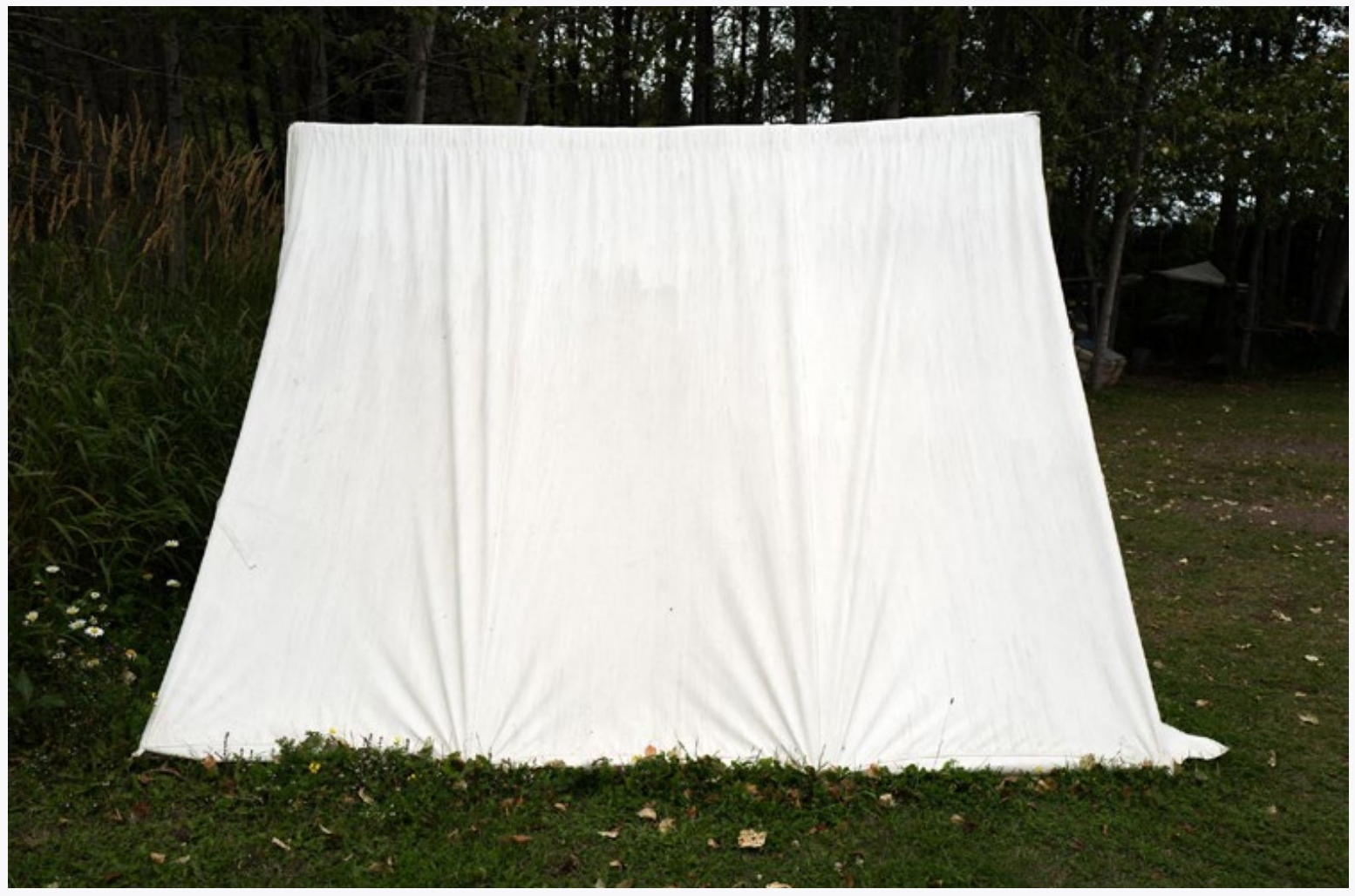9.1: 9PH PHOTOGRAPHS AS DOCUMENTS
- Page ID
- 92241

To take a photograph of something is proof you were there. Proof that the thing photographed actually existed. Everyone takes photographs to document things, whether it is a birthday party, the Grand Canyon, or the color of your hands after eating Flaming Hot Cheetos. You see these photographs every day, and sometimes they elicit an ‘ugh’ (like you really want to know what your ‘friend’ had for dinner).
The image above is a photograph of a t-shirt (I know there are other things, but the shirt is the point). Something about the phrase One Rack Mind interested me, or puzzled me… I don’t know, but I couldn’t figure out the phrase nor its relation to the people in the fraction of a second after I saw it, so I took the photograph to communicate it to future me so that he could perhaps figure it out at his leisure. Nothing earth-shattering, just a little note—certainly not something I would want to include in a book on photography (oh well). I think I was just intrigued by the levels of the pun.
Documentary photography has been around since there was photography. How could it be otherwise? These little mirrors with a memory we call photographs excel at recording what is there. While photojournalism implies a responsibility to a truth, documentary photography is generally considered much more fluid in its interpretation of reality. Bring your attitude, bring your opinions—documentary photographs are the editorials of photography.

With the second image shown here, it is obvious that it is a tent (I think), but since it is taken out of context, it says little or nothing else. You could even claim that in order for it to be a document more context or more story would be needed. It certainly couldn’t be claimed as photojournalism. Perhaps with more photographs or at least a caption to go along with it you could claim that it would be the editorial photograph that documents are. But as it stands, it is simply a puzzle. It could be about how fabric stretches, it could be about how tents used to be made, or it could even be an abstract image, with a classic trapezoid contained in the rectangle of the frame.
The term documentary photography encompasses a lot, but what is clear is that the photographs are as much about the photographer’s view as the subject, although they include aspects of both. The tent might be a documentary photograph, it might not—it is incomplete information.
During the depression, the US government tried hard to rebuild the rural economy with the Farm Security Administration (FSA). As part of that effort, the FSA hired a group of photographers to document conditions in rural America. The photographers who took part in that effort produced some of the history’s best documentary photographs which stand as icons in American society. You’ve seen some of these images. One is Dorthea Lange’s Migrant Mother, which is almost as famous in the U.S. as the Mona Lisa. But Lange took many other incredible images as part of the FSA (and, as many of the photographers, after the FSA). Walker Evans’ photographs are severely editorial while not looking like it at all, and many claim him as the father of modern documentary photography. Ben Shaun was also a painter, and it is interesting to compare how he approached each medium. Russel Lee, John Vachon, Arthur Rothstein, and Marion Post Wolcott are other famous FSA photographers. Since the FSA was financed with government funds (i.e. our money), these photographers’ FSA images are available without copyright. A good place to browse images is in the Flicker FSA Group.
More recent documentary photographers include Robert Frank, whose book The Americans has become an symbol of the beat generation with its modern interpretation of Alexis de Tocqueville’s 19th Century critique of America (de Tocqueville was French, Frank’s book was first published in France). Larry Clark and Larry Fink give us frank views of subcultures. Ken Heyman’s images are classically beautiful, while Lisette Model’s images are gritty. Roy Decarava presents a black point of view, while Mary Ellen Mark (warm social images) and David Plowden (cool urban landscapes) represent the polar opposites of where inspiration from the FSA and Walker Evans can lead to.

